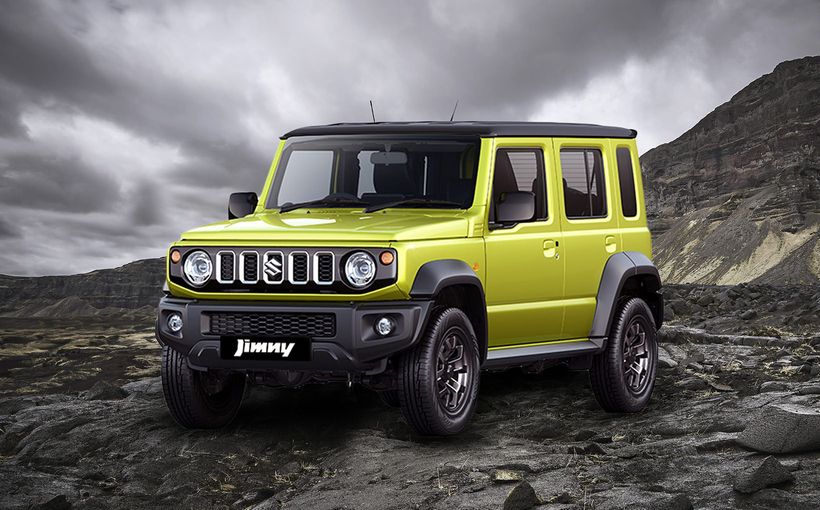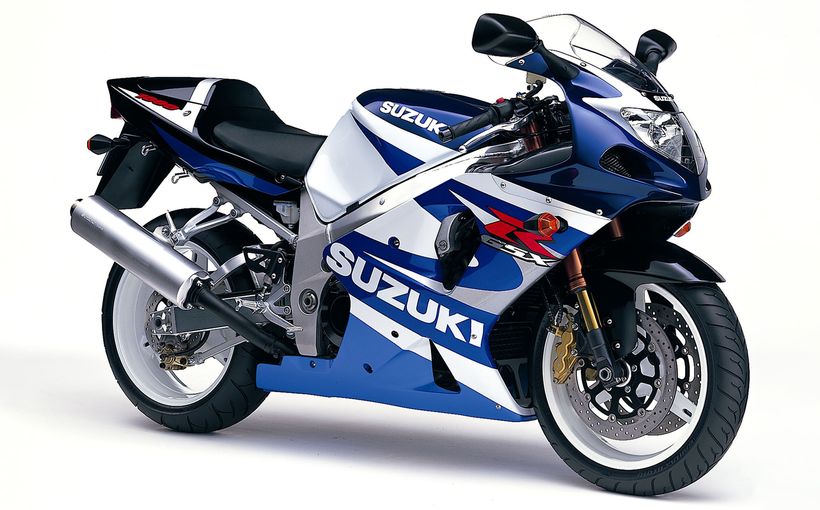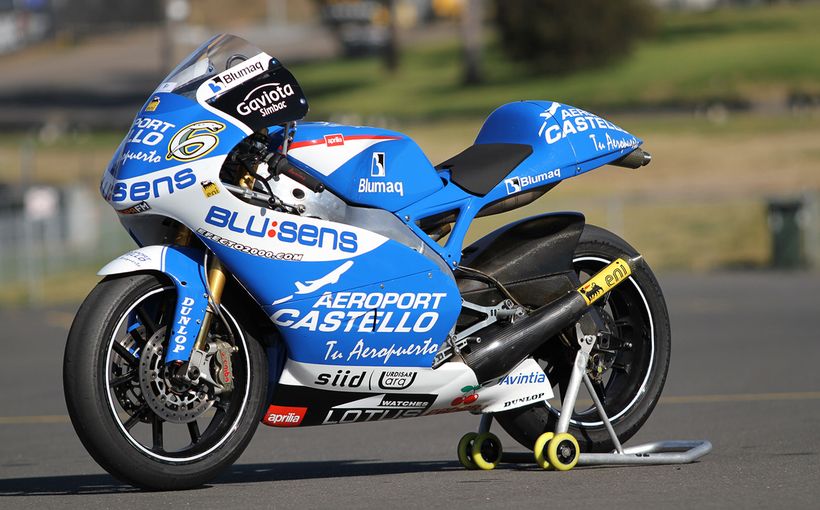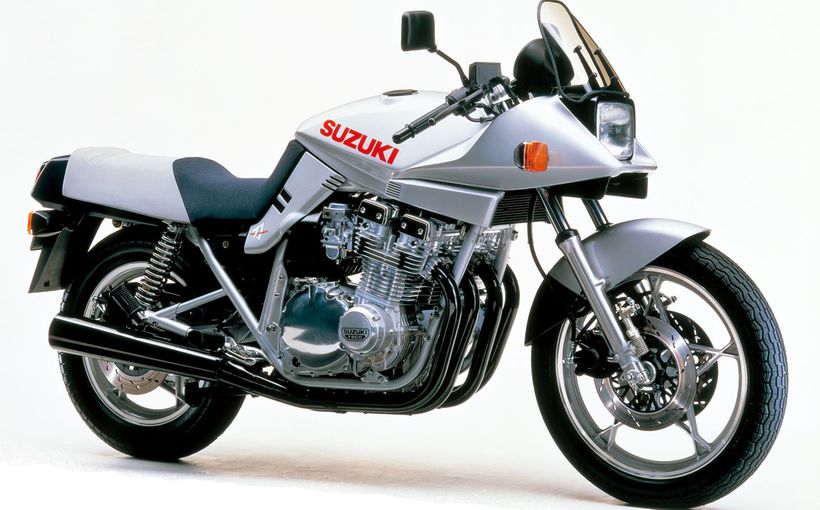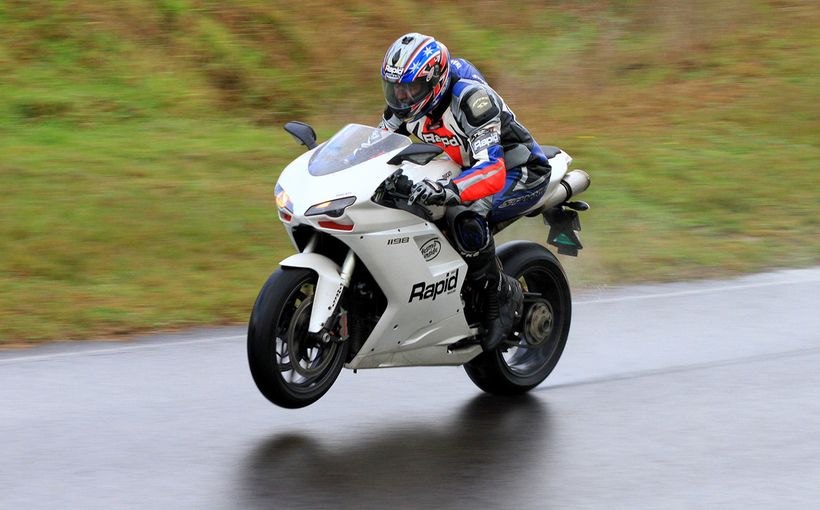2020 Suzuki V-Strom 1050XT: Have Strom, Will Travel…

Belting along Australia’s backroads requires a touring bike that is comfortable and capable — and Suzuki has delivered just that with the 2020 V-Strom 1050XT.
We rode the new V-Strom on good bitumen, crappy backroads, hard-packed gravel and even some looser, sandy firetrails and through all this it performed well.
The Adventure bike style might be there, but it’s more capable SUV than Dakar competitor, and Suzuki really wants you to know it’s a touring bike, not an Adventure bike. The big-bore V-Strom has always offered good real-world performance at a pretty decent price point, but was overshadowed by more capable machines at the top end and its own 650cc sibling as a lighter, cheaper option.
For 2020, Suzuki has really sharpened up the 1050XT version to offer an all-roads touring bike that is very capable and very affordable. The 1050 maintains the qualities V-Strom owners want — value, real-world performance and reliability. State-of-the-art performance has never been the V-Strom’s modus operandi; it targets buyers unimpressed by luxury bike costs or Euro pizazz. Such buyers usually value longevity highly. Fast enough and bullet proof is typical of Suzuki. The same recipe sold a lot of four-cylinder Bandits and of course drove the runaway success of the 650 V-Strom.

WHAT’S IN THE BOX?
For 2020 the engine has been made Euro 5 compliant. Maximum power jumps 6hp (to 106), developed at 8500rpm. This is less than the larger Euro twins and reflects Suzuki’s emphasis on midrange performance, rideability and durability — enough for most people, most of the time. Internal mods improve the already renowned durability of the engine.
The 1050 continues with the aluminium frame (there’s probably TL1000 DNA in it). The suspension features full adjustability at the front and remote preload and rebound (tension) adjustment on the rear. Nothing too fancy, but everything is up to the job.
DID spoked wheels and tubeless tyres are fitted, wrapped in a full-size front guard. This means the engine paint will survive longer than on most bikes. It misses out on a radiator guard, which, given its purpose, is a bit of a fail.
The screen is height adjustable without tools, although it can’t be done while moving. There’s a decent rack fitted and a traditional steel fuel tank.
Electrically the bike has been upgraded to Ride
by Wire throttle control, a six-axis IMU and CAN bus wiring. It’s definitely keeping up with the Joneses.
Suzuki calls its electronic package the Suzuki Intelligent Ride System (SIRS). It’s a good descriptor as all the bits work in unison to reduce sudden and unexpected bike behaviour. Importantly, it’s possible to change settings from sport, through touring, to slippery surface modes on the move.
The braking system is very sophisticated. The front and rear brakes are linked, but not all the time. When hydraulic pressure gets high enough, the rear activates from the front lever. This improves stability during hard braking.
The ABS is sensitive to lean angle, slope angle and bike loading, providing maximum brake performance (within the limits of available grip). No matter the bike’s load, it should feel consistent under brakes, with no rear- wheel lift and holding its line entering a corner. This is cutting edge. The ABS has a loose surface mode (1) too.
Three power modes are offered. All have the same peak power with differing sharpness. Traction control has three settings and off. Being able to switch it off is good for a bike with dirt road aspirations. Best of all (as previously mentioned), stopping isn’t required to turn it off.
Riders rejoice! Cruise control is now standard on the 1050XT. Riders are also further looked after with Easy Start Assist (one-button touch), Low RPM Throttle Assist (avoids stalling) and Hill Hold Assist Systems.

OTHER UPGRADES
The 1050 has some nice touches, including an LCD instrument panel. It’s not a TFT, but the size is good, although Suzuki has crammed a lot in, so the smaller text can be a little hard to read if your eyes are getting old. Lighting has gone all LED for a premium look. Practicality has been addressed with an under-seat power socket (we used it to supply a GPS) and a USB port adjacent to the instruments. There are plastic covers over high-wear areas on the clutch and frame (at the foot pegs). Replacing these to restore that new look wouldn’t be expensive.
A strong accessory mount bar is located above the instruments. Often things mounted in this position vibrate badly, but not so with the Strom, and it’s the perfect place to mount a GPS unit. Standard engine protection bar looks effective for fall-over scenarios, but the engine underside is still exposed.
Grip warmers are an accessory. Fine for those in Northern Australia, a problem for the rest of us.

ERGONOMICS
Unlike some others in this class, the 1050 is nicely sized. It’s not intimidating for smaller riders, yet roomy enough for taller riders. It’s thin between the legs, giving an easy reach to the ground.
The fuel load sits quite high. It’s noticeable when doing parking manoeuvres as the fuel can slosh about, pushing the bike off balance. To be fair, not everybody noticed this. On the road, the rider quickly acclimatises to the high centre of gravity.
The Strom offers above-average ergonomic adjustment, with the seat and handlebars being adjustable. Seat height is set via inserting/removing bushes cunningly stored under the pillion seat. It’s a quick job, requiring the use of a spanner.
Handlebar position is adjustable (a benefit of conventional ’bars). The seat/bar reach is still longish for many. The inclusion of offset bar clamps allowing fore/aft adjustment would be nice. Suzuki’s not the only sinner here; fortunately the aftermarket will be able to help if needed. The ’bar bend is good, with considerable width. Some may find them too wide.
I guess that’s why the universe gave us hacksaws.
Riders’ hands are looked after via span-adjustable levers, and their feet will like the rubber-topped foot pegs.
The Aero package works well. The adjustable screen offers good wind deflection and the hand deflectors are better than one might think. Long hours in the saddle are easy. The saddle itself is a bit Goldilocks — neither soft nor firm. The Suzuki throne will defer pain for quite some time. However, after a long day, riders will eventually acquire sore butt syndrome.
The switchgear is easy to use and the LCD screen quite bright. At first glance, the screen looks fussy with a lot of information displayed. Acclimatisation mitigates this. The important stuff is easy to see and secondary stuff is readable.
The centre stand is a nice inclusion, reducing the bike’s parking footprint and facilitating chain maintenance (a regular chore on this style of bike). It’s quite a heavy lift (something Suzuki might like to work on). Happily, it doesn’t compromise cornering clearance.


ENGINE
The 106 horses have strong legs. It’s not a torque monster, but has what’s required, never feeling stressed. Unlike many large V-Twins, it happily pulls from 1800rpm in top gear. Power builds evenly without dips to the redline. The engine is smooth at all commonly used rpm, the rider feeling only a soothing V-Twin pulse. For long-distance work it’s a peach of an engine — it even sounds good (although Euro 5 seems to have made bikes even quieter).
The bike felt enthusiastic in the sharpest throttle mode (A). The other power modes dial it back noticeably, with the dullest mode (C) only needed for really challenging conditions.
CHASSIS
The V-Strom has a taught chassis, giving it a solid, quality feel. Despite a longish wheelbase, it turns eagerly.
The 1050XT has one of the better emulsion rear shocks. Typically, emulsion shocks struggle with bigger hits and overheating. Neither issue was noticed with the V-Strom. The shock isn’t silky smooth, but it never kicked hard and was consistent. Many riders factor in a performance shock at purchase. In this case, a spring change to suit rider weight is all it may need. $1500 saved, possibly…
Some Suzukis in the past have exhibited front-end nervousness. It was most likely a fork/frame flex thing and was only noticeable when pushing on rough roads. The V-Strom showed none of this and it’s great Suzuki has it sorted. (It was always sorted on GSX-Rs, not so with some lesser models.)
The bike has enough adjustability to suit a wide range of riders. My personal preference is for compliant suspension and quick steering. The Suzuki has a mainstream setting, aimed at 80kg riders and relatively conservative steering geometry (offering good stability).


My weight and style are a long way from the mythical median rider, so changing the set-up to my personal preferences tests a bike’s adjustability. To do that, the V-Strom’s steering was sharpened by dropping the forks through the triple clamps by 12mm (a 10-minute job) and extra preload dialled into the shock, lifting the rear. This changed the balance, tilting the bike forward, improving the steering response. The textbook says there would be a small loss of stability. None was noticed.
Being a light rider, the fork compression/tension/preload adjusters were backed right off. The rear rebound damping was set to the fastest recovery possible, consistent with an occasional wallow. Set-up tip: If the recovery is too slow, it will stop wallow, but the shock packs down over bumps. Eventually it kicks you in the butt — sometimes like a size 13 boot.
These settings turned the Strom into an impressive handler. The ride was reasonably plush and rough road grip improved. It darted into corners like a 17in-wheeled bike, easily changed lines mid-corner, and held a line through rutted corners. The comfortably low pegs ultimately limit corner velocity.
Descending the Gibraltar Range on the Gwydir Highway (NSW), it was as quick as one would want to go (even with the test bike’s non-standard block tyres). It’s fair to say the suspension punches above its weight. If the rider is up for it, the Strom will bash sportsbike egos….
On dirt roads it felt good, always remaining composed and controlled (provided the 247kg weight is respected). Riding with Traction Control turned off wasn’t scary (fun even). Riding with it on reduced rider concentration level (and therefore fatigue). When I felt frisky, I turned it off; when I felt cruisy, I turned it on. Perfect.
The take home from all this… if OEM settings aren’t ideal, its character is quickly changed with a screwdriver and Allen key. It is a good-handling motorcycle.


ELECTRONICS
The Strom’s electronic package isn’t the flashiest out there, but it has what’s needed. There’s no quickshift up or down. Fortunately, the clutch/gearbox is so slick, the inclusion of a quickshifter wouldn’t greatly improve things.
The ABS, TC and power modes are adjustable via an intuitive button arrangement, and status is easily seen on the dash. It all works so well; the lack of a rider customisable mode wasn’t missed.
The ABS is worthy of special mention. Doing a 100km/h crash stop on dirt is absolutely drama-free. As it can’t be turned off, it needs to be good… and it is. It’s the best I’ve experienced in dirt. In a panic stop situation, brave L-platers could match pro-rider deceleration rates.
The V-Strom cruise control has an unusual feature. When engaged and the throttle is opened, the bike will accelerate. When the throttle is released, the bike returns to the set cruise speed. This means cruise doesn’t have to be disengaged to overtake. It’s a good idea, and it worked.
The Strom’s new electronic package puts it right back in the game, offering the features needed in the current market.

OTHER STUFF
The test bike came to us after doing some sterling work in the hands of other journalists. There was evidence of real-world treatment and a couple of “Oops” moments. This allowed us to assess how it will stand the test of time. By and large it looks to be pretty tough. One thing that popped out was the easily marked LCD screen surface. New buyers might want to apply clear contact.
Strong wheels are very comforting when touring OZ, and the Strom’s DID rims are the strongest spoked, tubeless wheel available. They avoid using a rubber seal and have exceptional impact resistance. Cleaning them proved easier than one might think, though not as easy as alloy wheels. Dinosaurs will remember Akront rims from the 1970s and their propensity to fill with mud. Looking at the V-Strom’s DIDs, they might see a similar issue. However, that’s not the case because… it’s not a dirt bike. If they fill with mud, it’s rider error, the bike is beyond its design envelope.
One issue is ground clearance. The relatively accessible seat height and tallish engine give limited ground clearance for this type of bike. The accessory bash plate would be money well spent as the exhaust system looks vulnerable to damage.

CONCLUSION
In a crowded market of flashy premium bikes, it’s easy to overlook the V-Strom, dismissing it as less motorcycle for less money. This isn’t the case. The blend of comfort, chassis performance and tractable power rolled into a bullet-proof package is a good one. The bike builds on the Strom’s traditional strengths, keeping it relevant.
The V-Strom 1050 XT comes close to the illusive dream of “one bike for all situations”. Yet, despite appearances, the XT isn’t really an off-road bike. The close-fitting front mud guard, rubber pegs and limited ground clearance largely rule that out. It’s not without ability, but others are better at venturing into the scenery. As a long-legged, all-road tourer, it delivers.
For minimalists, it’s exactly the bike they want, capable of swallowing miles with only moderate bank account damage. It does so in an understated way (maybe not the yellow paint variant). There’s a reason V-Stroms have been Suzuki’s biggest sellers and
the additional appeal of the new one will no doubt continue the tradition.
SPECIFICATIONS: 2020 SUZUKI V-STROM XT
ENGINE
Type: Liquid-cooled, 4-stroke, DOHC, 4-valve, 90deg V-Twin Capacity: 1037cc
Bore x stroke: 100.0mm x 66.0mm
Compression ratio: 11.5: 1
Fuel system: Fuel injection
Starter system: Electric
Lubrication: Wet sump
PERFORMANCE
Claimed maximum power: 106hp (79kW) at 8500rpm
Claimed maximum torque: 100.0Nm at 6000rpm
TRANSMISSION
Type: 6-speed
Final drive: Chain
Clutch: Assist slipper clutch, wet multiplate
CHASSIS AND RUNNING GEAR
Chassis: Aluminium twin-spar, with aluminium swing arm
Front suspension: KYB inverted telescopic fork, compression, rebound and spring adjustment
Rear suspension: Link type, KYB shock, rebound and spring adjustment
Front brakes: Dual discs, 310mm, Tokico four-piston calipers, ABS Rear brake: Single 260mm disc, Nissin single piston caliper, ABS Tyres: Front: 110/80R19M/C (59V); Rear: 150/70R17M/C (69V)
ELECTRONIC RIDER AIDS
Power Mode Selection: Yes, “Suzuki Drive Mode Selector” (SDMS), three settings
Brake Control: ABS, 2 modes, lean angle and load sensitive Traction Control System: Yes, three settings and “off”
Quick Shift System: No
Launch Control: No
Cruise Control: Yes
Additional: Six axis IMU, Low RPM Assist, Easy Start System, Hill Hold System
DIMENSIONS AND CAPACITIES
Rake: 25.5°
Trail: 109mm
Claimed wet weight: 247Kg
Seat height: 850mm
Wheelbase: 1,555mm
Fuel capacity: 20L
ETCETERA
Price: 20,990 (ride away, NSW)
Colours: Champion Yellow No2, Glass Sparkle Black, Glass Blaze Orange/Pearl Brilliant White
Test bike supplied by: Suzuki Australia
Website: suzukimotorcycles.com.au
Warranty: 2 years, unlimited kilometres



